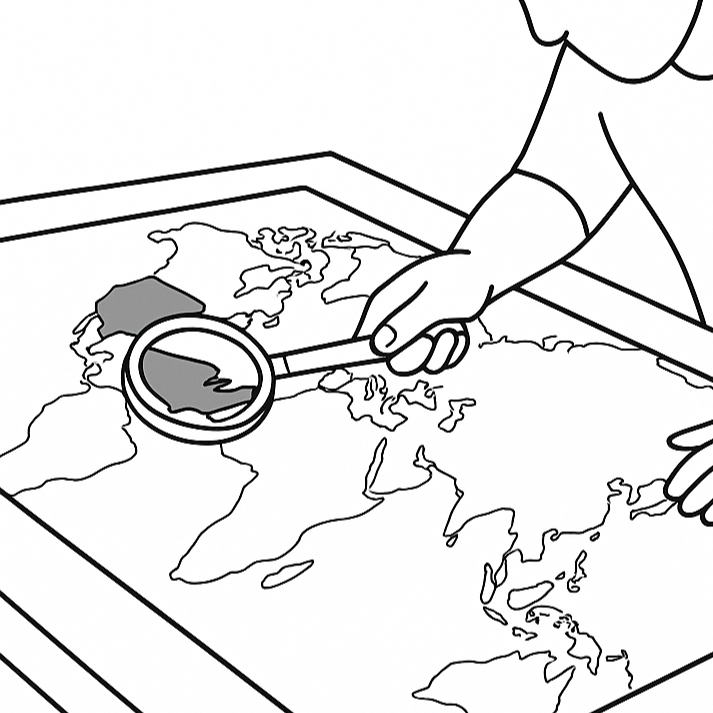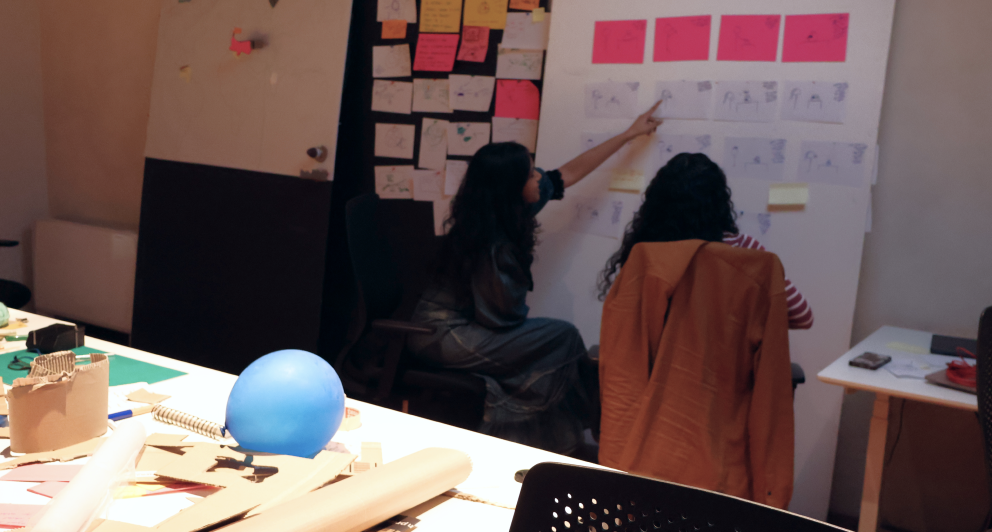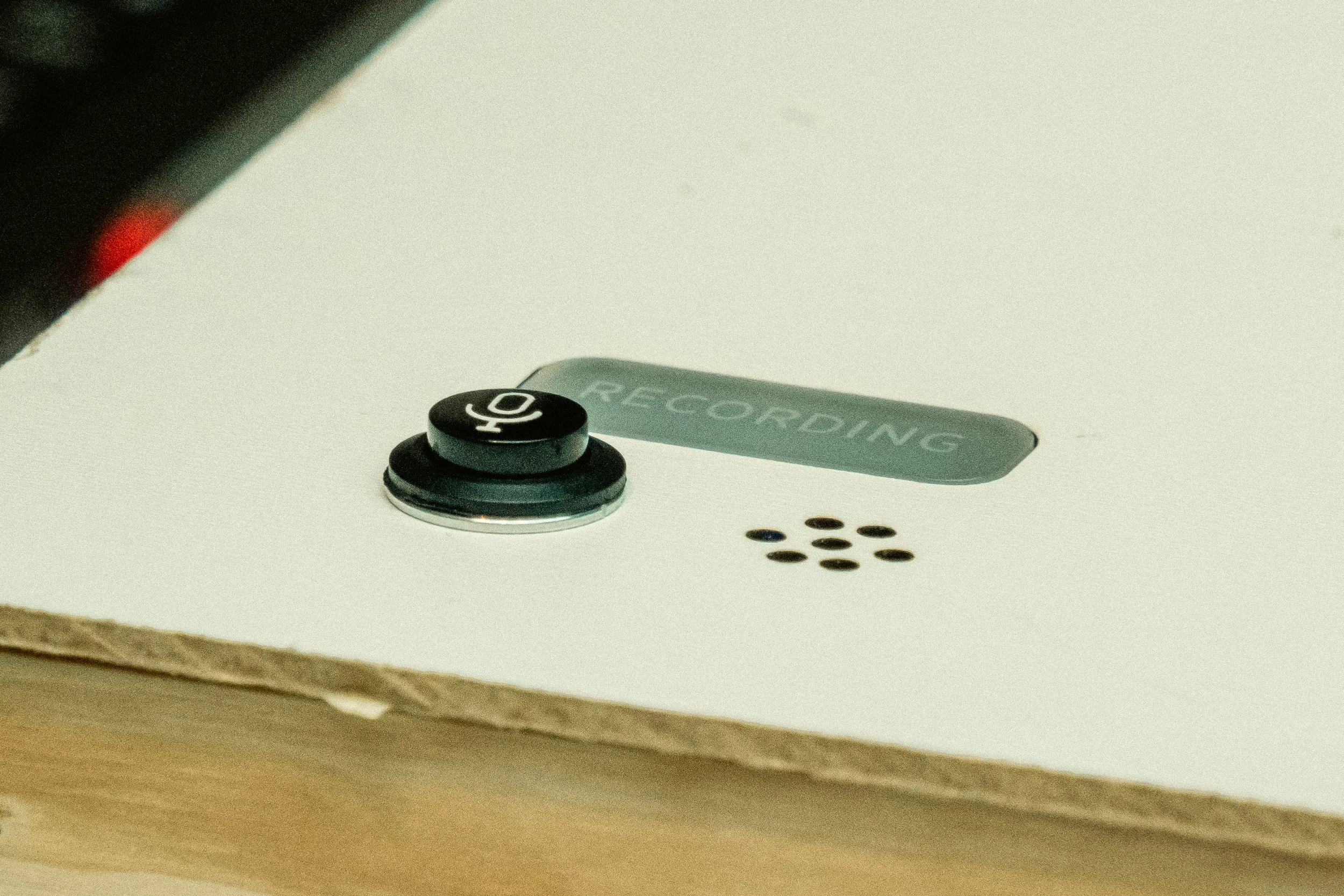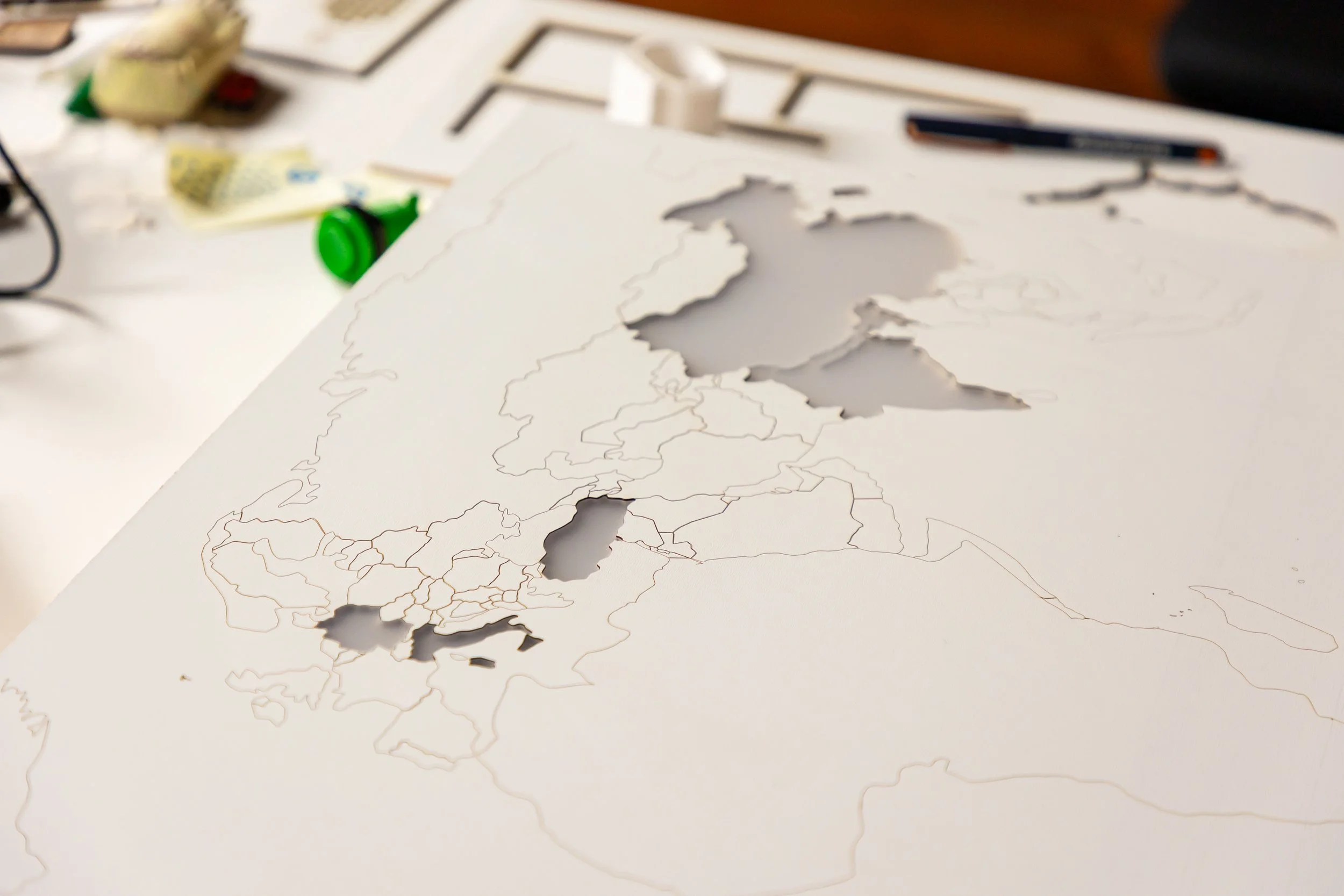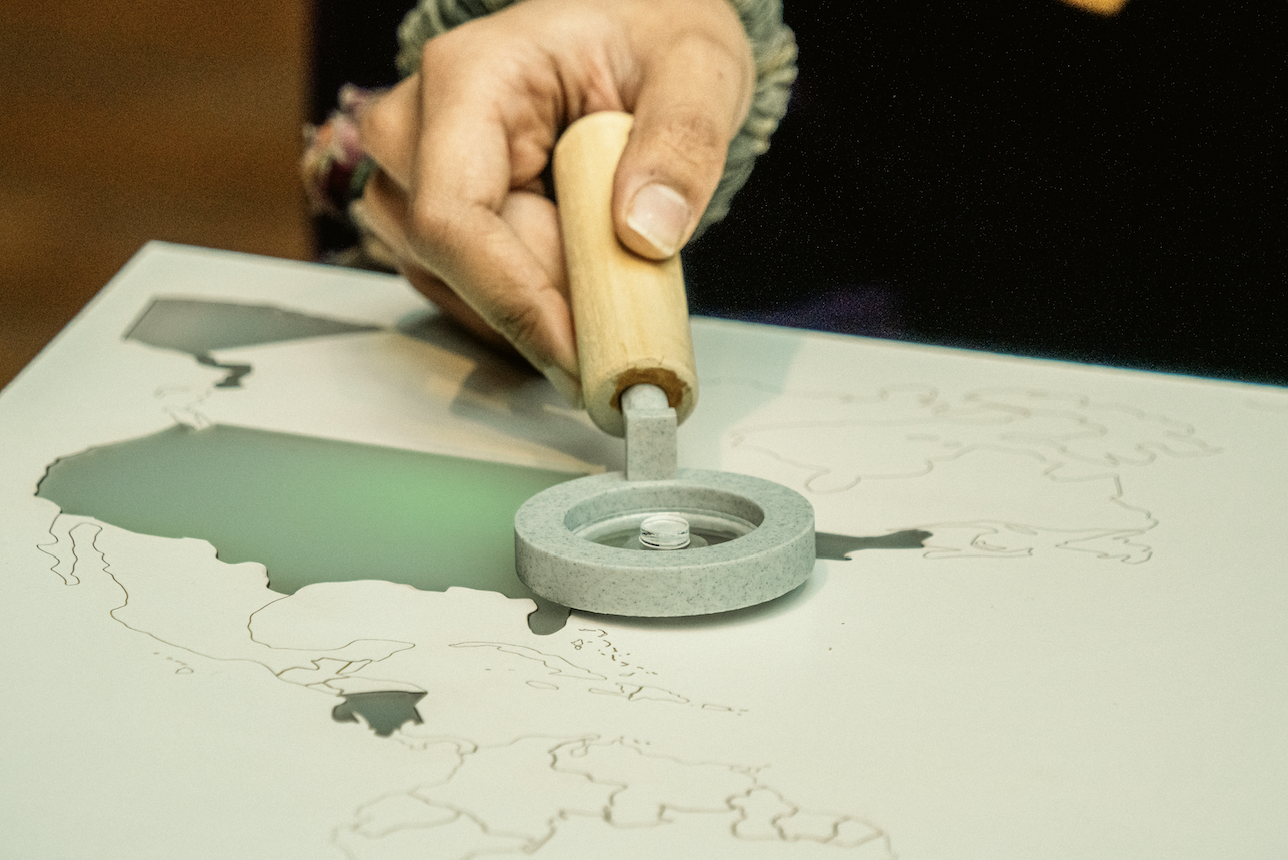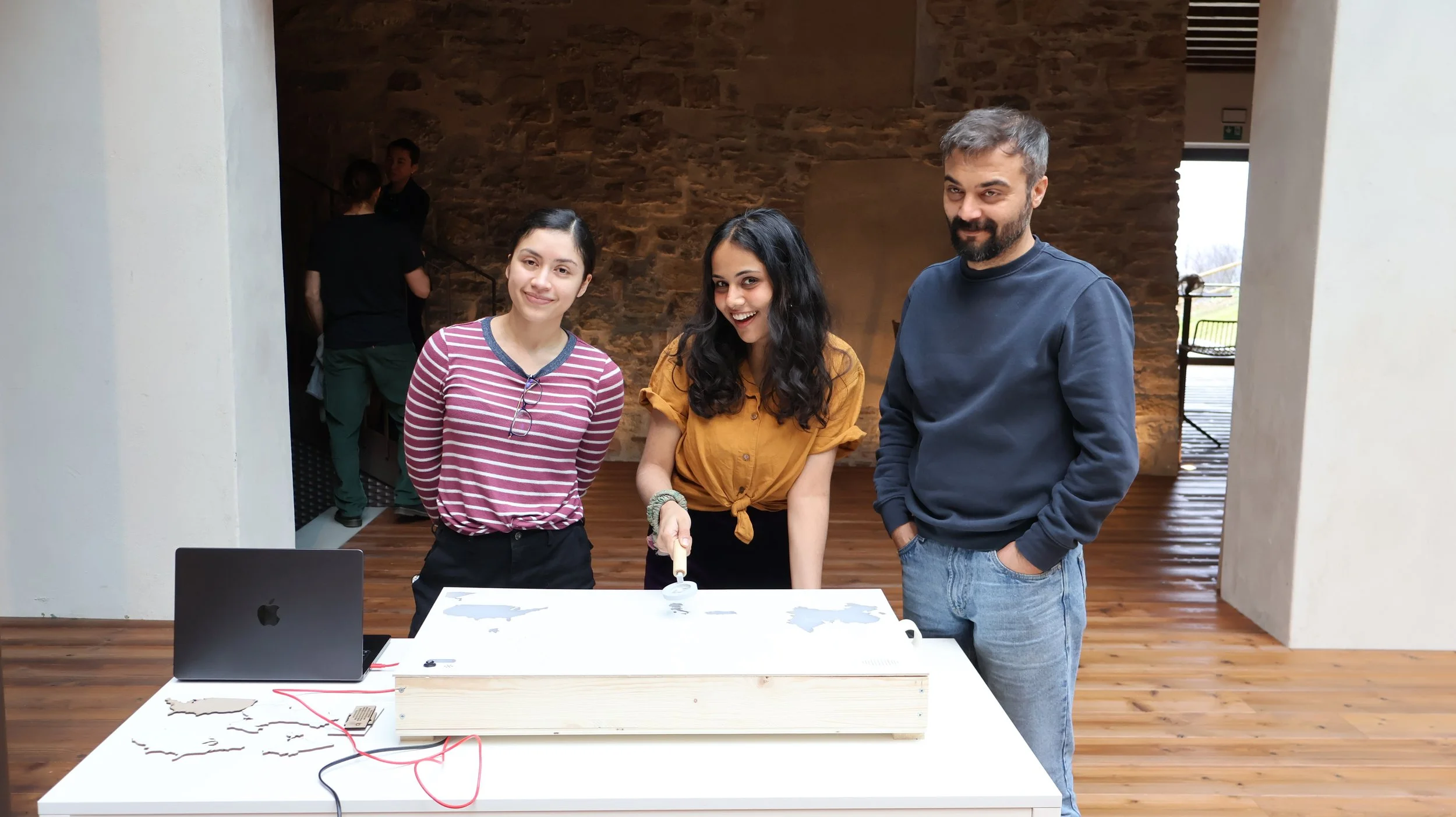An interactive map that helps you listen to the world around you
Earth Echos
My team created an interactive map to build cultural appreciation among CIID students. The map highlights their home countries, where students can record and share stories, memories, or recommendations. Others can then play these messages back to learn more about their classmates.
Dates
January 2025
Skills & Tools
Processing.org (java), Arduino, Adobe Illustrator, 3D printing, Woodworking, Laser Printing, IxD, Davinci
Deliverables
A physical device for a common space that individuals can interact with
Role & Team
Interaction Designer, Coder, Builder on team of 3
Earth Echos Demo Video
Problem Statement: When in a diverse institution, it can be difficult to empathize and connect with peers on a deeper, more personal level to learn about their cultural backgrounds. Understanding these backgrounds is crucial because it helps to build stronger connections and creates a more inclusive and empathetic community.
The 2024-2025 CIID program brings together students from South Korea, China, India, Turkey, Germany, Italy, the United States, and Costa Rica. These countries are represented on the map.
How it works
We used processing.org (Java) to generate all the code and an Arduino as the central component of our circuit. I designed the code for leaving and playing back a message and the recording light and button.
Each country has a hall-effect sensor (magnet detector) placed behind it, so placing the magnet-embedded magnifying glass over a country triggers the sensor, enabling students to record and leave a message.
A student can push a button on the map to initiate recording a message. It will leave a message in the country where the magnifying glass is placed.
Once recorded, the country lights up via LEDs, signaling that a story awaits exploration.
Others can then place the magnifying glass on the lit-up country to play back the message, sparking curiosity, questions, and connection.
Process
Problem Definition
Ideation
Prototyping
Storyboarding
Iterating
Testing
Learnings
This project was a big challenge since it required me to integrate coding, physical computing with an Arduino, and prototype fabrication.
I discovered that a solid grasp of programming fundamentals, combined with effectively using tools like ChatGPT to ask the right questions, can enable me to build a functioning product. This experience was incredibly rewarding and built my confidence in my ability to leverage new tools to solve complex problems.
The project also reinforced the idea that digital interaction design principles translate directly to the physical world. Our team's primary focus was creating intuitive user interactions, including providing clear feedback to the user while they recorded a message and after they finished.





